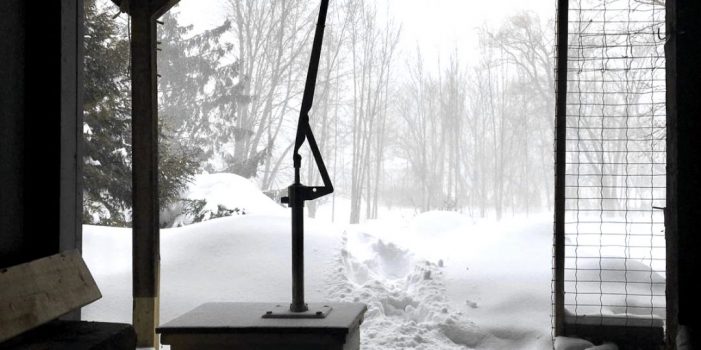Email a copy of 'Cold Weather Considerations - Part 5, by JM' to a friend
11 Comments
- Ad Rural Home Defense: non-fiction by author Don ShiftA cop's guide to protecting your rural home or property during riots, civil war, or SHTF. A sequel in the Suburban Defense series.
- Ad Survival RealtyFind your secure and sustainable home. The leading marketplace for rural, remote, and off-grid properties worldwide. Affordable ads. No commissions are charged!


I’ve never seen such a comprehensive explanation of how to deal with ice.
Tunnel Rabbit – Thanks, but I’ve actually only scratched the surface. As I mentioned crossing frozen lakes scares me, so I’ve spent a lot of time talking to folks that have done things like ice fishing most of their life to learn as much as I can. Even if you’re confident that it’s safe to cross some ice, nature can still throw some surprises at you.
JWR – good point on protecting yourself from the tips on the ice picks. One thing I’ve seen people do is dip the tips in a couple layers of Plastidip and let it dry. It protects them from the sharp points but the tips have no trouble punching through if you need to use them.
This article is deeply informative and educational. Thanks to JM for writing it, and to JWR for posting it and providing such an important forum.
I remember the loss of a young boy to a fall through the ice when I was also a child in the same neighborhood. Winters would freeze the surface of the water, and people would gather to skate across the ice. On this day, a couple of boys were out on what they thought would be a youthful winter adventure. Tragically, one fell through the ice, and succumbed to the cold. I have never forgotten. Ice does not always freeze uniformly. It can be extraordinarily dangerous.
Be safe everyone!
“Fresh snow on the surface should be safe to convert directly to drinking water, but you should look for discolorations or particles first to make sure it isn’t contaminated.”
Any pure white snow I have melted has contained a surprising amount of dirt. I think any melted snow should be treated as dirty water as far as drinking it untreated is concerned.
You are correct. In this regard, my chief concern would be metallic nano-particles. However, in most cases, we are not likely to get sick with parasites from snow water that has not been contaminated by terrestrial life forms. Snow contains traces of hydrogen peroxide that fizz out when it melts. This helps with killing pathogens, and it also helps seeds sprout quickly.
Unless you are in complete “survival mode” a cup or two of tea a day is not a big deal as long you also drink water. I live close to 8,000 feet so I am careful to monitor my hydration. I have not observed any ill effects from a bit of tea now and again.
Jake – you’re correct, and I was probably being overly general in my recommendations, but I figure it was easier to recommend avoiding it entirely than to try to provide a detailed explanation on how much is too much. It would also depend a lot on the person and conditions, and I just don’t have the depth of knowledge to provide that level of guidance. That’s why I emphasize that everyone should get some experience operating in winter conditions themselves so they can figure out what works best for them.
If there’s ANY moving water under ice, DO NOT TRUST IT! On a lake, even a school of fish can erode the ice making it unsafe. Also, if the ice is clear, and you see lots of vegetation below, STAY OFF! The rotting vegetation will produce heat. Stay away from muskrat holes in ice, as they build up vegetation under the ice, and also on the ice to keep their hole open.
Spot on with the cross country ski equipment. Most people in the states just go to a department store and buy the cheap cross country skis with the “fish scales ” and plastic poles.
After just a few short hours of laboring with this cheap equipment they give up and declare cross country skiing useless. If you get a proper set of skis matched to your height and weight and use the right wax x/c skiing can be extremely enjoyable.
Also more expensive but definitely much better carbon-fiber poles make all the difference with a proper set of skis. As mentioned skiing downhill with x/c skis definitely has its challenges and there’s no substitute for experience. Start small and work your way up to the bigger hills.
Great article especially for those who like to play out in the snow 🙂
Excellent article, water can also be easily melted with sunlight focused with a magnifying glass or fresnel lense(pocket magnifyer),artic canteens are available as surplus and allow greater volumes to be carried externally. Ice will stop travel more than anything else,a paper thin coat of ice can be too slippery to do anything but slip/fall. Slip on ice cleats for shoes/boots are available from most uniform/safety gear shops,snow/ice/mud chains for tires can make impossible travel easy(learn how to install/adjust before needing). If emergency ice crossing a ladder or a couple boards can get you across thin ice(if being chased sets up a trap for pursers)